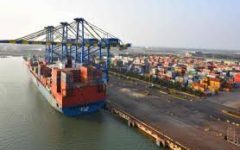 The warehousing sector’s meteoric rise to prominence in India was spurred by the introduction of GST leading to consolidation and the central government’s decision to grant ‘infrastructure status’ to the logistics sector including warehousing. Furthermore, with 100% FDI permitted in warehousing and logistics alongside maturated state-level warehousing policies, the sector has been seeing rapid institutionalization and subsequent inflow of major investments.
The warehousing sector’s meteoric rise to prominence in India was spurred by the introduction of GST leading to consolidation and the central government’s decision to grant ‘infrastructure status’ to the logistics sector including warehousing. Furthermore, with 100% FDI permitted in warehousing and logistics alongside maturated state-level warehousing policies, the sector has been seeing rapid institutionalization and subsequent inflow of major investments.
The investments grew from USD 675 million during 2014-2016 to USD 2.3 billion from FY 2017-2019 in the top 8 cities of India. In 2020, the pandemic reinforced a structural shift in consumer preferences – accelerating the penetration of online sales even in tier-2 and tier-3 cities, thus giving a huge boost to the sector. Any e-commerce operation needs a strong and robust supply chain network, of which, modern warehousing forms a critical component. As global e-commerce companies rapidly look to expand in their battle for retail supremacy, investments in infrastructure like warehousing; especially well located, modern, compliant with very high construction quality; will remain a top priority. In a previous report, we have also estimated that e-commerce companies themselves will require at the very least 25 million sq. ft. of Grade-A warehousing stock in 2025 across the country which in 2020 was 9.3 million square feet.
Breaking News
- Global air cargo demand grows, momentum softens toward 2026
- ₹1,615 cr rail cargo terminal approved near Ramayapatnam Port
- Mysuru Airport set for upgradation to handle B737 and A320 aircraft
- Odisha to get seven new cargo terminals to boost logistics ops
- ₹850 Crore MMLP Planned at Nashik
- Menzies Aviation Achieves Cargo iQ Certification
- ‘Powering growth with tech, clean energy and AI’
- Allcargo Logistics Expands Reach to Cover 100% of India’s PIN Codes
- ‘Domestic Cargo Absorbs FDTL Shock, but Schedule Sensitivities Persist’
- ‘Limited belly capacity deepens domestic cargo volatility’
- ‘Belly cargo crunch likely to last through 2026’
 Cargo Breaking News
Cargo Breaking News


